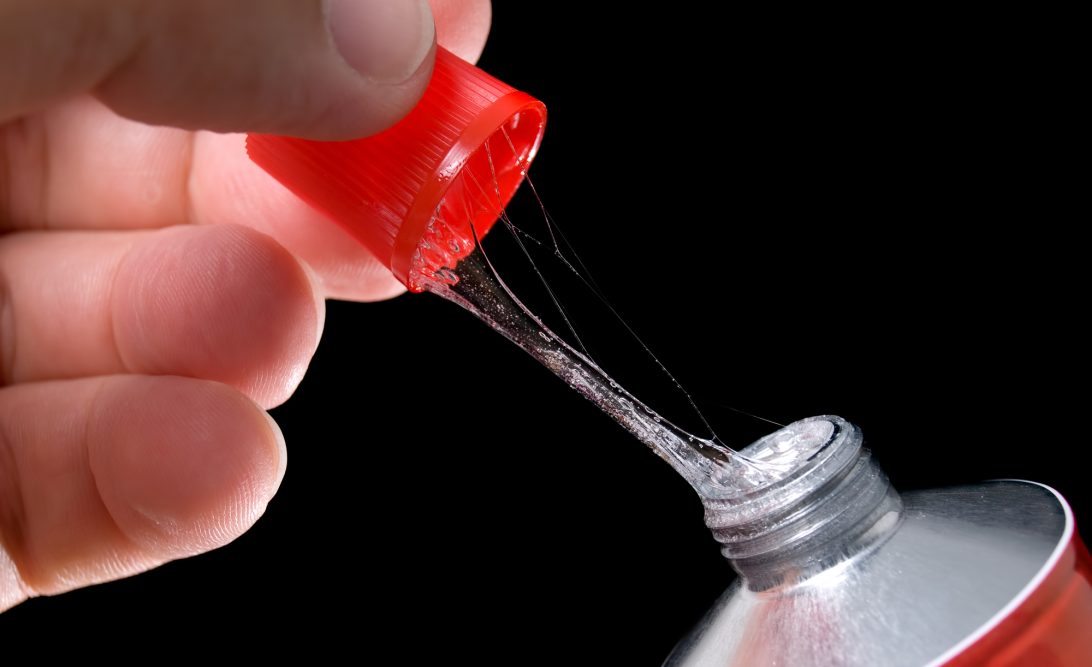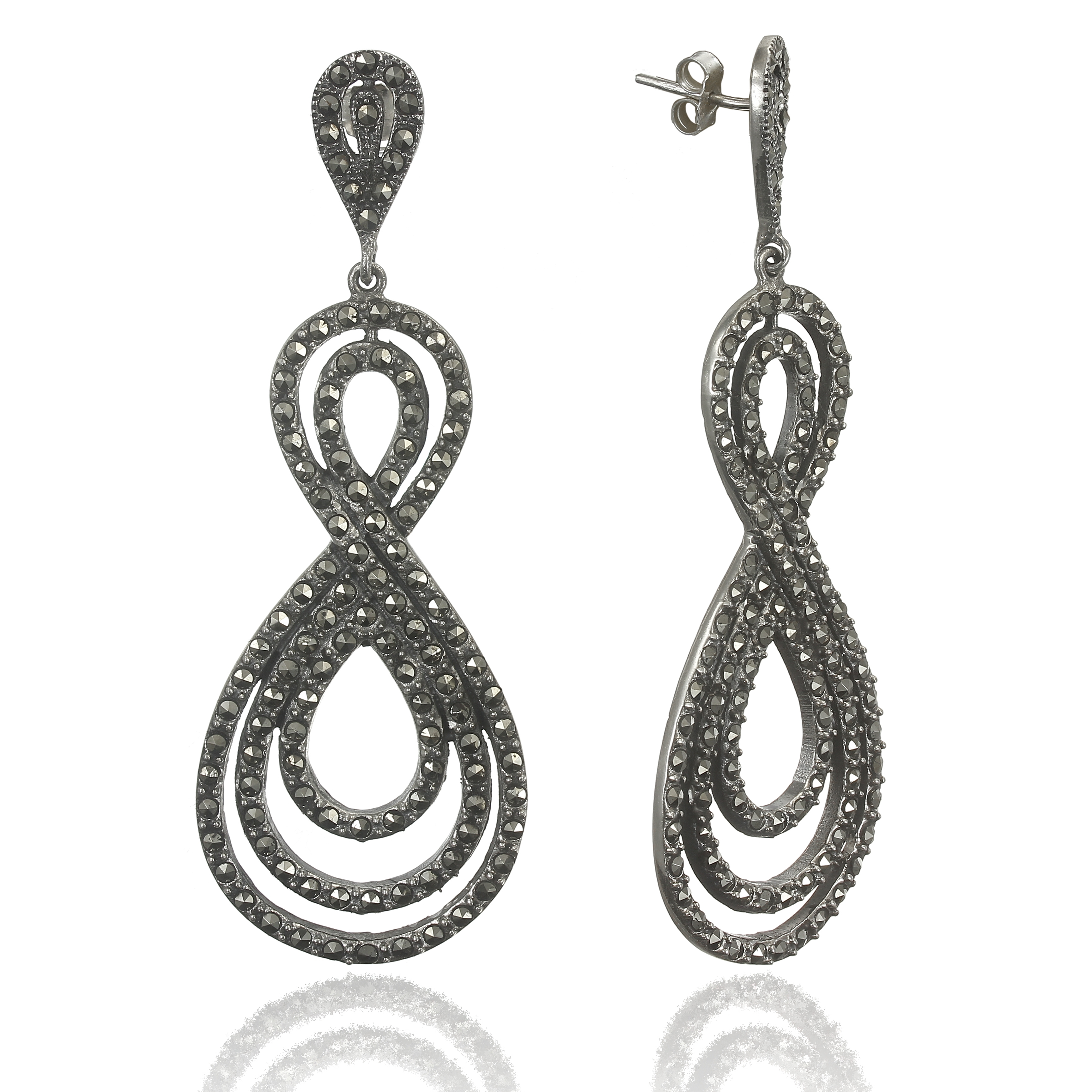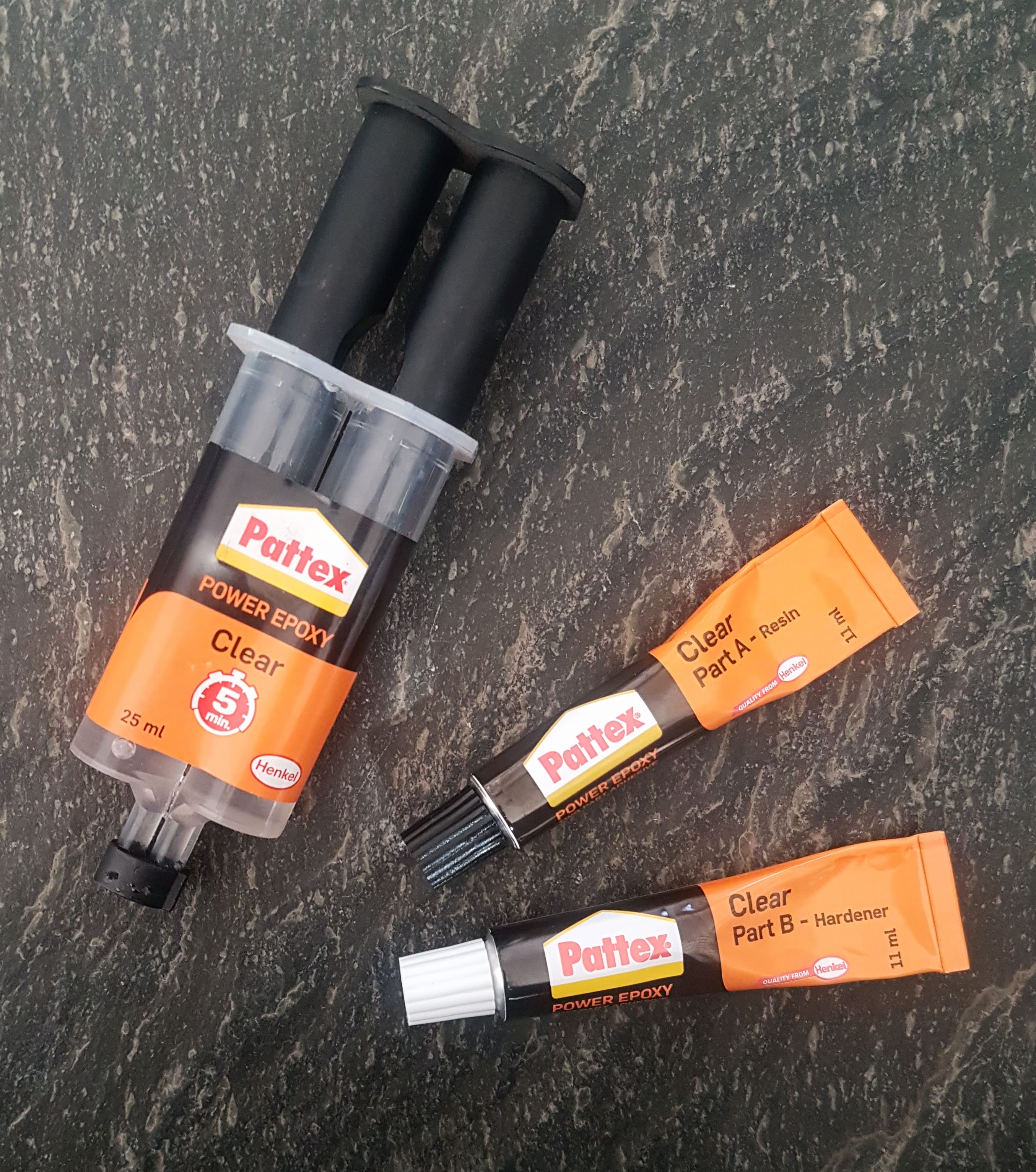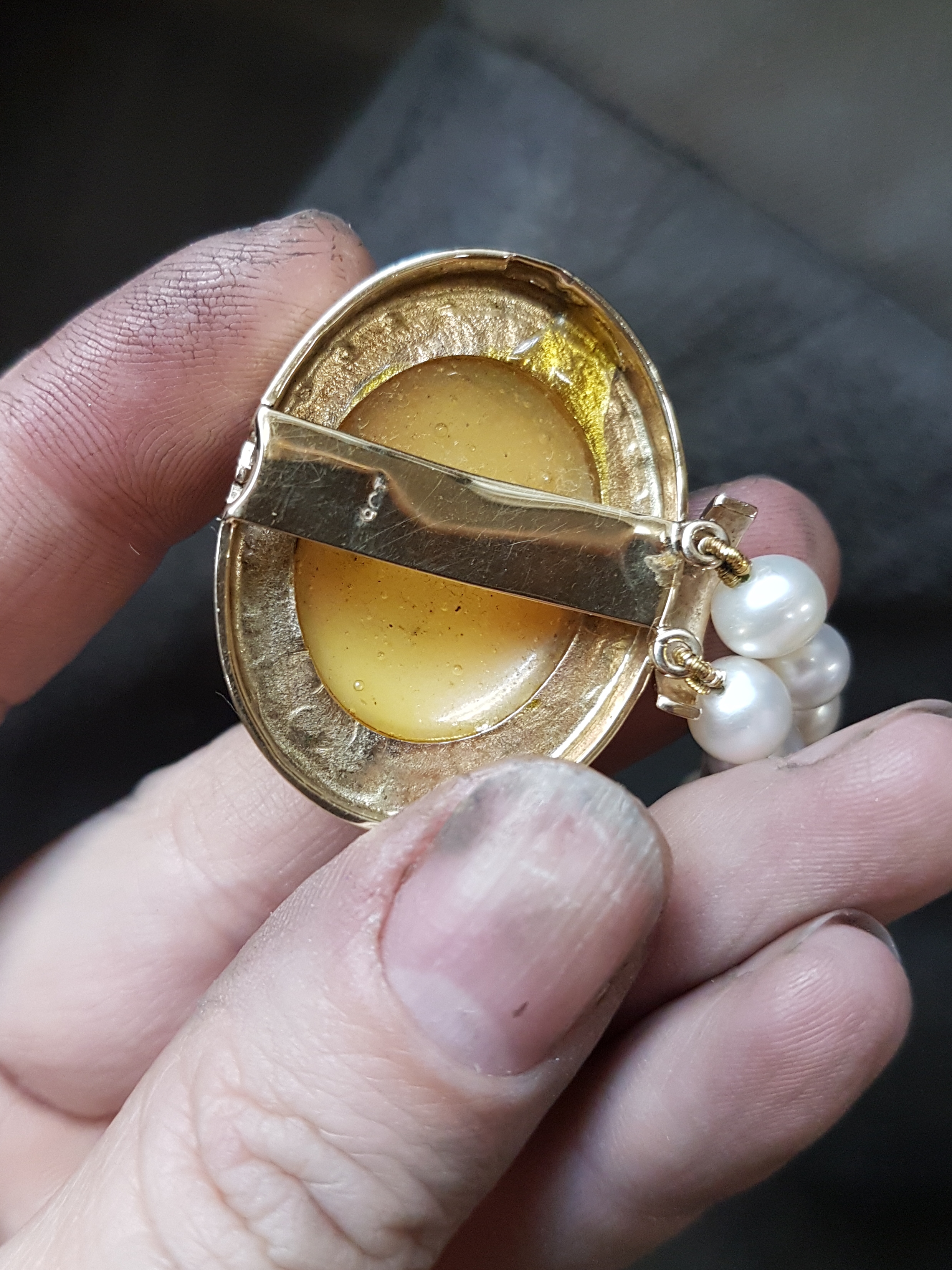Your basket is currently empty!

Glue
Glue is used in jewellery manufacture to secure design elements that cannot be held or fastened with the usual methods of setting, crimping, riveting and soldering.
Common gems to glue
Foil-backed gems
Gluing transparent faceted natural or man-made stones is never recommended. Gems with glue against their pavilion facets will look dull, which is why they are always set in fine jewellery, rather than glued.
Foil-backed gems, however, are man-made imitation gems with a thin layer of shiny foil stuck to its underside. The foil creates sparkle through the gem and because the glue is behind the foil it will not make the gem look dull. These gems are usually only encountered in costume jewellery and on the faces of less expensive fashion watches, and they only land on the benches of fine jewellers when the gems start falling out. When re-gluing foil-backs, take care not to damage the thin foil layer, as this will affect the sparkle of the gem.
Soft natural gems
The pressure needed to rub metal onto less durable gems will be too much, causing it to break or chip. Soft gems therefore cannot be set, it has to be glued. Examples are turquoise, opals and the pyrite used in marcasite jewellery, These gems are not transparent, so becoming dull when glued is not a concern.

Half-drilled pearls and beads
The only way to secure a half-drilled gem is to glue it onto a post. The post must be a tight fit in the hole of the bead or pearl for the glue join to be strong enough. A common example is pearl ear studs.
Organic gems
Organic gems like wood, bone, shell, pearl, mother-of-pearl, coral etc are also too fragile to set. A frame or seat is built into which these gems are then glued.
Types of glue:
Jewellers are spoilt for choice when it comes to the glues available to them, though some may be more appropriate for jewellery manufacture than others. The types of glue discussed here are all available at hardware stores:
Contact adhesives
Contact adhesives are glues where a bit of glue is applied to the surfaces of both the pieces to be bonded. Depending on the brand, the glue must usually be left to dry a bit before the parts are brought together. The two surfaces are pressed together or clamped, and the glue creates an immediate and strong bond.
This immediate bond means that one will not be able to reposition the glued parts once they are stuck, so care must be taken to line them up perfectly before joining.
Because the glue has time to dry before bonding the parts, excess glue is less likely to ooze out and leave unsightly traces of glue between gems and settings.
Epoxies
Epoxy glues work by mixing together two equal parts of glue from different tubes. Once the two parts are mixed thoroughly, they start to dry.
Epoxies are popular with jewellers because they remain runny just long enough to apply the glue neatly and to position the parts properly before leaving it to dry.
Epoxy spills can be wiped off while wet with acetone, provided that the material being glued will not be damaged by the solvent.
Because the glue does not dry immediately, the glued parts will need to be placed or bound in such a way that they do not slide out of position while the epoxy is drying. Although epoxies take longer to cure completely, the glued item should be secure enough to not move within 30 minutes.
Epoxies that are not mixed properly will not dry properly, leaving a sticky layer on the surface. If this happens, the epoxy will have to be removed and the item re-glued.

Instant glues
Instant glue, also commonly known as super glue, is a clear and very runny (like water) glue that also dries quickly. Instant glues are sold in small tubes due to their short shelf-lives. They will often dry in the tube, especially if it was not sealed properly after being used the first time.
Super glue dries hard in a thin layer between the pieces to be bonded. Thick beads of glue do not bond properly. Because of this, it is not a popular glue to use in jewellery making because, unlike epoxies, it cannot be used to fill small cavities where the gem and its seat are not always an exact fit.
Specialist glues
Every now and then a jeweller may need to bond unusual materials together with glues that are designed for exactly that purpose. There are special glues, for example, for gluing pieces of fabric together, like Sew Simple from Bostik. Another example is wood glues, which are specially formulated to bond wood to wood.
Which one to choose..?
When choosing glue for a project it is always advisable to read the product information on the packaging. Look out for the following: the product needs to be strong, fast-drying, heat and water resistant. For jewellery-making the glue also needs to be clear, as yellow or white glues might show and look untidy.
Also look for glues that can bond different types of materials together. Glues that can bond glass to metals to plastics to ceramics etc. will definitely be able to glue the different materials jewellers work with.
Glue that will be slightly flexible when dry is preferable when bonding metal to materials like cord or rubber and leather straps.
Some glues may eat away at plastics and rubbers, so it may be prudent to test the glue you want to use on a small part of these materials before attempting to glue.
What a jeweller needs to know about glue…
Glues age
Many glues yellow with age and become brittle, with an increasing risk of the gem coming loose and falling out. When this happens it is better to remove the glued item, clean the old glue off and re-glue it, making sure that the gem is safe for a few more years.

Glue is sensitive to repeated exposure to heat
It is not recommended to leave glued items in hot cars, in direct sunlight or in hot water such as when cleaning jewellery, or bathing or showering while wearing it. In fact, jewellers remove glued gems from their settings by heating it up with a steam cleaner or holding it under very hot running water. Many glues will become rubbery and in some cases just peel off (see Removing glued gems) after repeatedly heating it in this way.
Surfaces to be glued must be clean
This may seem obvious, but when chasing deadlines, jewellers may neglect to properly clean and dry the surfaces to be glued, which will weaken the bond.
Surfaces to be glued must be a tight a fit
The tighter the fit, the stronger and neater the bond. If there are large gaps between gems and their seats, the glue will show, even though it is transparent and colourless.
Glue is the last thing you do…
Gluing is literally the last process before the jewellery item being made is finished. Do not attempt to file, polish or even wash the piece after it has been glued. The black dirt from these processes end up sticking to your neatly glued areas, and it will never come off again, resulting in an unprofessional, dirty-looking jewellery item.
When to take additional precautions
Leather and rubber thongs or straps are often used to make necklaces and bracelets. Metal caps are then glued onto the ends of the leather or rubber, and the clasp mechanisms are then attached to these end-caps.
Because the strap or thong is slightly flexible, it is foreseeable that it will work itself out of the cap over time if it is only glued. To ensure that this does not happen, jewellers may opt to pinch or crimp the cap onto the thong or strap as an additional precaution, after gluing it in place. Another option is to put a rivet through the sides of the cap and the glued strap or thong.
To conclude…
Gluing small parts are not always as easy as it sounds. The biggest problem is not how to glue, but rather how to keep everything that is not being glued clean and glue-free. Glue tends to find itself onto one’s hands, and once this happens, it is very difficult to keep everything else clean.
The best advice would be to take some time in preparing the jewellery item and work area before gluing. Make sure that everything to be glued fits properly, that the items are nicely positioned to receive the glue and that the glue and mixing tools are within easy reach.
Also keep a bit of acetone and tissue paper close, just in case… If you need to abort the gluing process for some reason, separate the parts, clean the glue off while it is still wet, and try again!